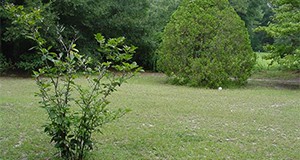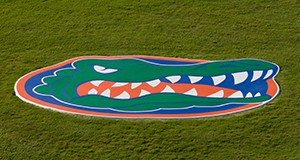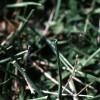
Florida lawns are subject to many environmental stresses. These can include nutrient deficiency, salinity, temperature extremes, over- or under-watering, soil problems, and prolonged exposure to shade or traffic. The use of proper cultural practices will help keep your lawn healthy and more stress-tolerant. This two-page fact sheet explains how to choose the most appropriate grass, fertilize properly, mow to the correct height, and irrigate for your lawn’s needs. Written by L.E. Trenholm, and published by the Environmental Horticulture Department.
http://edis.ifas.ufl.edu/ep070
Tag: Florida Lawn Handbook
General Recommendations for Fertilization of Turfgrasses on Florida Soils

In many neighborhoods, people envy the individual with the most beautiful lawn and think they cannot grow a lawn of equal quality. That is not necessarily true. A well-maintained lawn only requires some knowledge about fertilization, watering, pest control, and mowing. This publication provides basic information about fertilization. By far, the best approach to a proper fertilization program is to start with a soil test, but, if a soil test is not available, these guidelines can be used for a general turfgrass fertilization program. Original publication date May 1991. Revised August 2013 and August 2015.
http://edis.ifas.ufl.edu/lh014
Watering Your Florida Lawn (ENH9/LH025)
 Irrigation is one of the most important cultural practices that we do for our lawns. Since water is a limited resource and is vital to the health of your lawn, it is very important that watering be done correctly. This 3-page fact sheet was written by L. E. Trenholm, J. B. Unruh, and J. L. Cisar, and published by the UF Department of Environmental Horticulture, April 2013.
Irrigation is one of the most important cultural practices that we do for our lawns. Since water is a limited resource and is vital to the health of your lawn, it is very important that watering be done correctly. This 3-page fact sheet was written by L. E. Trenholm, J. B. Unruh, and J. L. Cisar, and published by the UF Department of Environmental Horticulture, April 2013.
http://edis.ifas.ufl.edu/lh025
Zoysiagrass for Florida Lawns (ENH11/LH011)
Zoysiagrass maintenance is different from that of other Florida lawn grasses. When improper maintenance practices are followed, undesirable results are likely to occur. Learn the details about this attractive turfgrass that has been dramatically improved by turfgrass breeders in recent years. This 8-page fact sheet was written by J. Bryan Unruh, L. E. Trenholm, and J. L. Cisar, and published by the UF Department of Environmental Horticulture, June 2011.
http://edis.ifas.ufl.edu/lh011
Centipedegrass for Florida Lawns (ENH8/LH009)
Centipedegrass is a slow-growing grass with low fertility requirements when compared to other Florida lawn grasses. It grows close to the ground, is medium textured, and is naturally lighter in color than other lawn grasses. Well-adapted to the climate and soils of Central and Northern Florida, it is the most common home lawn grass in the Florida Panhandle. There is now one cultivar adapted to South Florida conditions. This 7-page fact sheet discusses the advantages and disadvantages of this turfgrass variety, cultivars available for lawn use in Florida, establishment, maintenance, pest management, and other problems. Written by J. B. Unruh, L. E. Trenholm, and J. L. Cisar, and published by the UF Department of Environmental Horticulture, April 2011.
http://edis.ifas.ufl.edu/lh009
St. Augustinegrass for Florida Lawns (ENH5/LH010)
St. Augustinegrass is widely adapted to the warm, humid (subtropical) regions of the world. It is the most commonly used lawn grass throughout the state of Florida and can grow satisfactorily in a wide variety of soils. This revised 11-page fact sheet discusses the advantages and disadvantages of this turfgrass variety, cultivars available for lawn use in Florida, establishment, maintenance, pest management, and other problems. Written by L. E. Trenholm, J. L. Cisar, and J. B. Unruh, and published by the UF Department of Environmental Horticulture, April 2011.
http://edis.ifas.ufl.edu/lh010
Bahiagrass for Florida Lawns (ENH6/LH006)
Bahiagrass is a popular, low-maintenance lawn grass that does well with limited water and fertilizer inputs. Although bahiagrass does not produce a carpet-like, dense lawn like some other warm-season lawn grasses, it does provide a good, low-maintenance lawn where slightly reduced visual quality is acceptable. This revised 7-page fact sheet was written by L. E. Trenholm, J. L. Cisar, and J. B. Unruh, and published by the UF Department of Environmental Horticulture,April 2011.
http://edis.ifas.ufl.edu/lh006
Bermudagrass for Florida Lawns (ENH19/LH007)
Bermudagrasses (Cynodon spp.) are among the most widely used warm-season grasses. Improved, fine-textured bermudagrasses are used throughout the south on golf courses, athletic fields, and in high-profile residential and commercial landscapes where a fine-textured, dense ground cover is desired. This revised 5-page fact sheet describes advantages, disadvantages, cultivars, maintenance, and pest problems. Written by L. E. Trenholm, J. L. Cisar, J. B. Unruh, and published by the UF Department of Environmental Horticulture, March 2011.
http://edis.ifas.ufl.edu/lh007
Take-all Root Rot (SSPLP16/LH079)
Take-all root rot, or Bermudagrass decline, is a root rot disease triggered by high rainfall or stress and manifesting as irregular yellow or light green patches two to three weekds after the pathogen has been active in the roots. This 3-page fact sheet was written by M. L. Elliott and P. F. Harmon and published by the UF Department of Plant Pathology, February 2011.
http://edis.ifas.ufl.edu/lh079
Brown Patch (SSPLP5/LH044)
Brown patch, large patch, or Rhizoctonia blight is a fungal disease observed November through May that infects the leaf area closest to the soil, eventually killing the leaf. This 3-page fact sheet was written by M. L. Elliott and P. F. Harmon and published by the UF Department of Plant Pathology, February 2011.
http://edis.ifas.ufl.edu/lh044
Turfgrass Disease Management (SSPLP14/LH040)
Turfgrass diseases are underappreciated because the biological organisms (plant pathogens) causing the problems are rarely observed. Fortunately, grasses maintained using proper cultural practices (water, mowing, and fertility) are not as likely to become diseased or be as severely damaged as grasses that do not receive proper care. This 11-page fact sheet discusses turfgrass diseases, their causal agents, diagnosis, and management. Written by M. L. Elliott and P. F. Harmon and published by the UF Department of Plant Pathology, February 2011.
http://edis.ifas.ufl.edu/lh040
Cercospora Leaf Spot (SSPLP57/LH082)
Cercospora leaf spot is a fungal disease of St. Augustinegrass observed during periods of frequent rainfall. This revised 2-page fact sheet was written by M. L. Elliott and P. F. Harmon, and published by the UF Department of Plant Pathology, February 2011.
http://edis.ifas.ufl.edu/lh082
Rust (SSPLP12/LH051)
Rust is a fungal disease that occurs in cool weather causing yellow specks enlarging to spots with orange pustules in St. Augustinegrass and zoysiagrass. This revised 2-page fact sheet was written by M. L. Elliott and P. F. Harmon, and published by the UF Department of Plant Pathology, February 2011.
http://edis.ifas.ufl.edu/lh051
Pythium Root Rot (SSPLP11/LH050)
This fungal root disease affecting all warm-season turfgrasses is associated with wet soil conditions causes nonspecific decline in turf quality. This revised 2-page fact sheet was written by M. L. Elliott and P. F. Harmon, and published by the UF Department of Plant Pathology, February 2011.
http://edis.ifas.ufl.edu/lh050
Helminthosporium Leaf Spot (SSPLP9/LH048)
This fungal disease is most serious on bermudagrass and acts over a wide range of temperatures. This 2-page fact sheet was written by M. L. Elliott and P. F. Harmon, and published by the UF Department of Plant Pathology, February 2011.
http://edis.ifas.ufl.edu/lh048
Gray Leaf Spot (SSPLP8/LH047)
This disease affects primarily St. Augustinegrass, but also centipedegrass. It is most often observed from late spring to early fall, especially during prolonged periods of rainfall. This revised 2-page fact sheet was written by M. L. Elliott and P. F. Harmon, and published by the UF Department of Plant Pathology, February 2011.
http://edis.ifas.ufl.edu/lh047
Fairy Rings (SSPLP7/LH046)
Fairy rings, especially the mushrooms, are most commonly observed during the summer months, when Florida receives the majority of its rainfall. This revised 2-page fact sheet with identification and control information was written by M. L. Elliott and P. F. Harmon, and published by the UF Department of Plant Pathology, February 2011.
http://edis.ifas.ufl.edu/lh046
Anthracnose (SSPLP56/LH043)
Identify and control for this disease that often appears as reddish-brown spots surrounded by a narrow yellow halo, primarily in centipedegrass. This revised 2-page fact sheet was written by M. L. Elliott and P. F. Harmon, and published by the UF Department of Plant Pathology, February 2011.
http://edis.ifas.ufl.edu/lh043
ENH14/EP098 Overseeding Florida Lawns for Winter Color
Revised! ENH14, a 4-page illustrated fact sheet by L.E. Trenholm and J. Bryan Unruh, describes this practice used to provide green winter turf color for Florida lawns — selecting rye grasses, seedbed preparation, maintenance, and transitioning back to permanent grass. Published by UF Department of Environmental Horticulture, December 2010.
http://edis.ifas.ufl.edu/ep098
ENH03/LH013 Establishing Your Florida Lawn
Revised! ENH-03, an 8-page illustrated fact sheet by L. E. Trenholm, describes the two primary methods of establishing turfgrass — seed and vegetative propagation (sodding, sprigging, and plugging) — as well as post-planting care, fertilizing, mowing, and renovation. Published by the UF Department of Environmental Horticulture, January 2010.
http://edis.ifas.ufl.edu/lh013